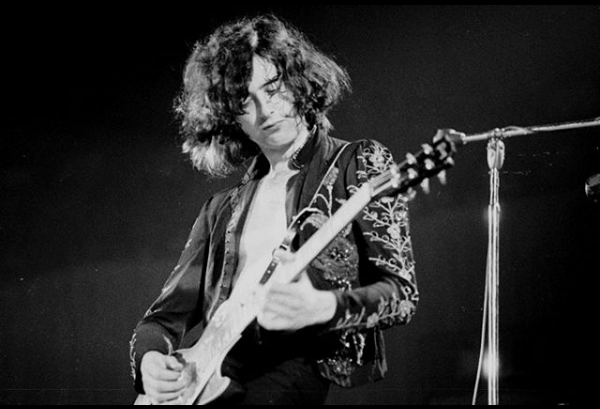For guitar enthusiasts, achieving a distinctive and recognizable guitar tone is a mark of true mastery. While some guitarists attribute their sound solely to their playing technique, Jimmy Page, the legendary guitarist of Led Zeppelin, found his unique tone through relentless experimentation. Through his innovative approach and creative use of limited resources, Page crafted a guitar sound that became synonymous with the power and energy of rock music.
Exploring New Territories with The Yardbirds
Even during his early years with The Yardbirds, Page sought to push the boundaries of guitar tone. He embraced experimentation, incorporating fuzzboxes and other effects into his sound, as showcased in songs like “Heart Full of Soul.” His time spent with Jeff Beck, his replacement in the band after Eric Clapton’s departure, further expanded his musical horizons, allowing him to observe and absorb new techniques while playing bass alongside Beck’s mesmerizing guitar work.
When Page formed Led Zeppelin, he had already amassed a repertoire of musical ideas and licks. While the band’s first five albums feature an array of remarkable tones, Page emphasized that tone alone was not his sole focus. In his own words from Led Zeppelin FAQ, he recalled, “All I had to work with was an overdrive pedal, a wah-wah, an Echoplex, and what was on my guitar. It wasn’t a lot, and I had to create the entire range of sounds found on the first five Zeppelin albums.”
Innovative Approaches with Limited Gear
Rather than letting the absence of effects pedals hinder him, Page harnessed his ingenuity and transformed his limited gear into a tool for sonic exploration. In the iconic track “Black Dog,” the distinct guitar sound in the opening verses was achieved by directly plugging his guitar into the console. The lack of a reverb pedal led Page to bend one string slightly out of tune in “Whole Lotta Love,” producing a natural reverb effect by echoing off the open string.
Unconventional Techniques and Acoustic Explorations
Page’s experimentation extended to his work with acoustic instruments. In songs like “Ramble On,” he strummed the guitar closer to the bridge, giving it a sharper attack when captured by microphones. Beyond the mixing board, Page’s creativity soared in the breakdown section of “Whole Lotta Love,” where he created a tapestry of noise using various recording techniques.
Unleashing Creativity with Limited Resources
Page’s innovation continued to flourish on tracks like “Ten Years Gone,” where he layered multiple guitar parts with distinct tones on top of each other. While Page did not have access to the most cutting-edge gear during the early days, it could be argued that this limitation actually enhanced some of Led Zeppelin’s classic recordings. In a world obsessed with achieving the “perfect” guitar tone, Page proved that creativity can shine through when musicians are forced to work with limited resources.

